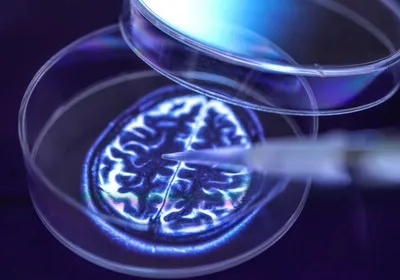To grow brain organoids, researchers have traditionally cultured human induced pluripotent stem cells (iPSCs), which develop into clumps of tissue with embryonic features. That tissue is then bathed in proteins to spur the development of nervous-system progenitor cells, which are put into nutrient-containing oil droplets and floated in a spinning bioreactor. After 10 days, neurons begin to form, and in about a month, the neurons begin to spontaneously arrange themselves into different regions that mimic an intact brain.
To accelerate this process and gain more control over the arrangement of cells in the organoid, researchers have started using 3-D printers. The cells start in a hydrogel-based bio-ink, which is then printed into oil droplets surrounded by a lipid layer. Using separate nozzles, the printer can arrange different cell types in specific patterns. Once printed, the cellular constructs can be transferred to a liquid medium so they can continue to grow ...





















